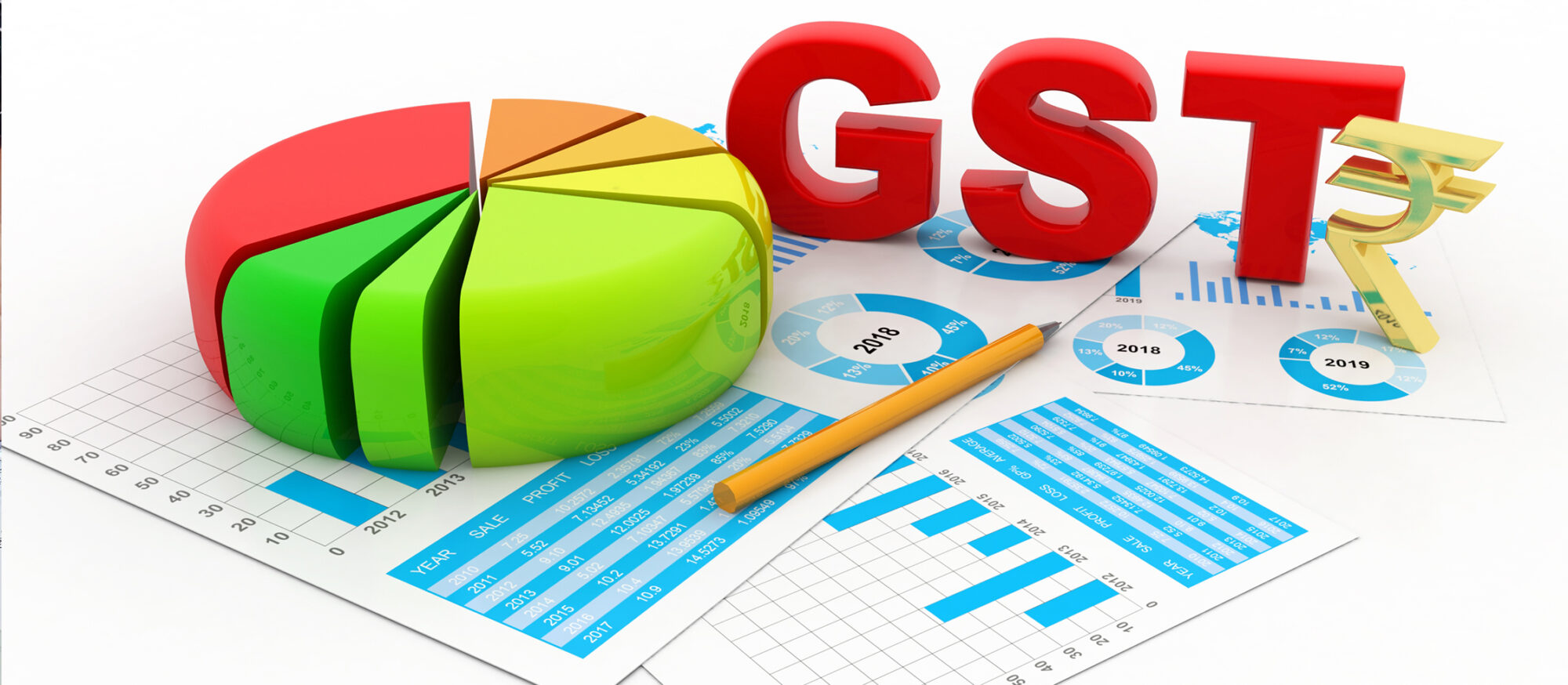
GST Rates and Manufacturing Growth
- January 24, 2022
- 0
The robust design of the GST is based on ensuring that the entire value chain from raw material to retail is brought under the GST net. This would ensure that there is no cascading effect of tax on tax and only the value addition at each stage is taxed. This design requires that there be no exemptions because any exemption breaks the pass through of the taxes and creates the problem of embedded taxes at various points in the value chain, increasing costs. While the importance of phasing out exemptions is commonly accepted, there is insufficient awareness of low rates of duty causing an inverted duty structure and accumulation of input tax credits at various points in the value chain.
It is therefore important to understand the universe of GST paying inputs. This universe of input can be split into three parts, namely input goods, input services and capital goods. The capital goods component is very important for taxes as it can create accumulation of credits if the output goods are not appropriately taxed at a level at which it can offset the earlier taxes. Therefore, ideally, to attract fresh investment as visualized in the productivity-linked incentive (PLI) scheme to boost manufacturing, the output GST rate for the manufacturing sector must be closer to the standard rate.
The current clamour for a lower GST rate by various manufacturing industries is based on a narrow focus on the taxes on input goods, and ignores considerable taxes that are also embedded in input services and capital goods. The capital goods component is especially important now in view of the mandated guidelines for installation of pollution control equipment.
Further, a lower GST rate would also hurt the manufacturing segment wanting to avail the PLI scheme benefits where substantial investment would entail taxes on capital equipment, which for offsetting would require reasonable output GST rates.
As manufacturing units move up the value chain, input services like design, intellectual property rights, financial services become more and more important. Therefore, the manufacturing sector must desist from embracing short-termism but look at these rates from the medium/long term perspective of growth and modernization.
In addition to an appropriate GST structure, manufacturing growth would also require a low import tariff regime covering critical raw materials and capital equipment not manufactured in India. These rates now averaging between 15 per cent and 18 per cent are too high, and hurt sector.
Needles to mention, tax policy is not the only factor that will influence investment decisions. To create favorable ecosystem for manufacturing growth, one needs to reform the factor markets, which includes land, labour and energy.
In the GST rate debate, therefore, rate fixation has to look at the input supply chain in its entirety. One of the reasons why GST rate fixation evokes a strong reaction is that there is an asymmetry of information between the government, on the one hand, and trade and industries on the other. It is therefore important to share information in the public domain and acquaint all the stakeholders with the relevant facts. Communication is vital. Reform by stealth is not feasible and also not desirable. Reform has to be based on widespread consultation and debate. This is especially important in the case of economic reforms where issues are more complex and nuanced with both pros and cons and then there is a resultant. It is not easy to explain the overall advantage of the resultant and requires policy mandarins to have both domain knowledge and the gift of communication. Many years ago, Francis Bacon famously remarked that “Knowledge is power”. Today in a digital world where public participation and awareness is intense, “expression is also power”.
जीएसटी दरें और विनिर्माण वृद्धि
जीएसटी का अच्छा डिजाइन यह सुनिश्चित करने पर आधारित है कि कच्चे माल से लेकर खुदरा बिक्री तक की पूरी मूल्य श्रृंखला को जीएसटी के दायरे में लाया जाए। इससे यह सुनिश्चत हुआ है कि कर पर कर का नकारात्मक असर नहीं पड़ता है और प्रत्येक चरण में केवल मूल्य श्रृंखला पर ही कर लगता है। इस डिजाइन में यह आवश्यक है कि कोई छूट नहीं हो क्योंकि कोई भी छूट करों के रास्ते को चैड़ा कर देती है और मूल्य श्रृंखला में विभिन्न बिंदुओं पर लागू करों की समस्या पैदा कर देती है, जिससे लागत बढ़ती है। हालांकि छूट को खत्म करने की अहमियत को आम तौर पर स्वीकार किया जाता है। लेकिन इस बारे में पर्याप्त जागरुकता नहीं है कि शुल्क की कम दरें उल्टे शुल्क ढांचे और मूल्य श्रृंखला के विभिन्न बिंदुओं पर इनपुट टैक्स क्रेडिट बढ़ने की वजह बन रही हैं।
ऐसे में जीएसटी भुगतान वाले इनपुट को समझने की जरूरत है। इन इनपुट को तीन हिस्सों-इनपुट वस्तुओं, इनपुट सेवाओं और पूंजीगत वस्तुएं कर के लिए बहुत अहम हैं क्योंकि अगर उत्पादित माल पर उतना कर नहीं लगाया गया, जो पहले के करों की भरपाई कर सकता है तो इससे इनपुट क्रेडिट का अंबार लग सकता है। इसलिए विनिर्माण बढ़ाने के लिए उत्पादन आधारित प्रोत्साहन (पीएलआई) योजना में ताजा निवेश आकर्षित करने के लिए विनिर्माण क्षेत्र के उत्पादित माल पर जीएसटी की दर मानक दर के नजदीक होनी चाहिए।
इस समय विभिन्न विनिर्माण उद्योगों द्वारा जीएसटी दर कम करने की मांग केवल इनपुट सामग्री पर करों को ध्यान में रखते हुए की जा रही है, जिसमें इनपुट सेवाओं और पूंजीगत वस्तुओं में शामिल अहम करों की अनदेखी की जा रही है। प्रदूषण नियंत्रण उपकरण अनिवार्य रूप से लगाने के दिशानिर्देशों को मद्देनजर रखते हुए पूंजीगत वस्तु घटक विशेष रूप से महत्वपूर्ण है।
इसके अलावा जीएसटी की कम दरों से वह विनिर्माण खंड पर प्रभावित होगा, जो पीएलआई योजना के लाभ हासिल करना चाहता है। पीएलआई योजना के तहत अहम निवेश के दौरान पूंजीगत उपकरणों पर कर लगेगा, जिसकी भरपाई के लिए उत्पादन पर तर्कसंगत जीएसटी दरों की दरकार होगी। विनिर्माण इकाइयां जैसे-जैसे मूल्य श्रृंखला में ऊपर जाती है तो डिजाइन, बौद्धिक संपदा अधिकार, वित्तीय सेवाओं जैसी इनपुट सेवाएं ज्यादा महत्वपूर्ण हो जाती हैं। इसलिए विनिर्माण क्षेत्र को लघु अवधि के नजरिये से बचना चाहिए और इन दरों को वृद्धि और आधुनिकीकरण के मध्यम एवं लंबी अवधि के नजरिये से देखना चाहिए।
उचित जीएसटी ढ़ांचे के अलावा विनिर्माण वृद्धि के लिए कम आयात शुल्क की जरूरत होगी। इस आयात के दायरे में ऐसे कच्चे माल पूंजीगत उपकरण आएंगे, जिनका भारत में विनिर्माण नहीं होता है। ये दरें इस समय औसतन 15 से 18 फीसदी हैं, जो बहुत अधिक हैं और विनिर्माण क्षेत्र को प्रभावित कर रही हैं।
यह उल्लेख करने की आवश्यकता नहीं है कि केवल कर नीति ही निवेश फैसलों को प्रभावित नहीं करेगी। विनिर्माण वृद्धि के लिए अनूकूल तंत्र विकसित करने के लिए कारक बाजार में सुधार करने की आवश्यकता है, जिनमें भूमि, श्रम और ऊर्जा शामिल हैं।
इसलिए जीएसटी दर की बहस में दर तय करने में पूरी इनपुट आपूर्ति श्रृंखला को ध्यान में रखा जाना चाहिए। जीएसटी दर तय करने की कड़ी प्रतिक्रिया क्यों होती है, इसकी एक वजह यह है कि सरकार और व्यापार एवं उद्योगों के बीच सूचनाओं में तालमेल नहीं होता है। इसलिए यह जरूरी है कि सूचनाओं को सार्वजनिक किया जाए और संबंधित त्थयों से सभी भागीदारों को परिचित कराया जाए। इसमें संवाद बहुत अहम है । चुपके से सुधार करना व्यवहार्य नहीं है और न ही वांछनीय है। सुधार व्यापक विचार-विमर्श और बहस पर आधारित होना चाहिए। यह खास तौर पर आर्थिक सुधारों के मामलें में बहुत महत्वपूर्ण है, जिनमें मुद्दे ज्यादा जटिल हैं और जिनके फायदे और नुकसान दोनों हैं और इसका एक नतीजा होता है। इसके नतीजे के फायदे बताना आसान नहीं है और नीति-निर्माताओं के लिए उस क्षेत्र का ज्ञान और संवाद का कौशल होना आवश्यक है। बहुत वर्षों पहले फ्रांसिस बेकन ने कहा था कि ज्ञान ही ताकत है । आज डिजिटल दुनिया में जन भागीदारी और जागरुकता अत्यधिक है, इसलिए अभिव्यक्ति ही शक्ति है।
































































